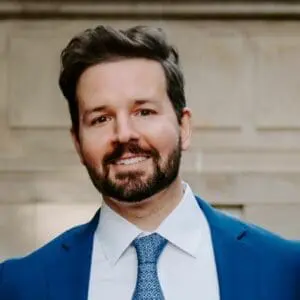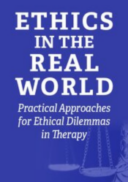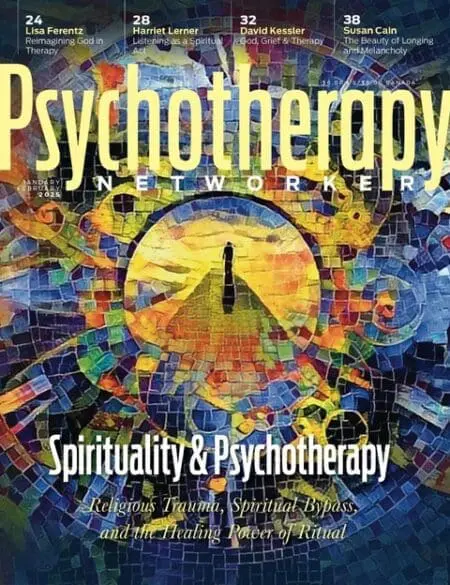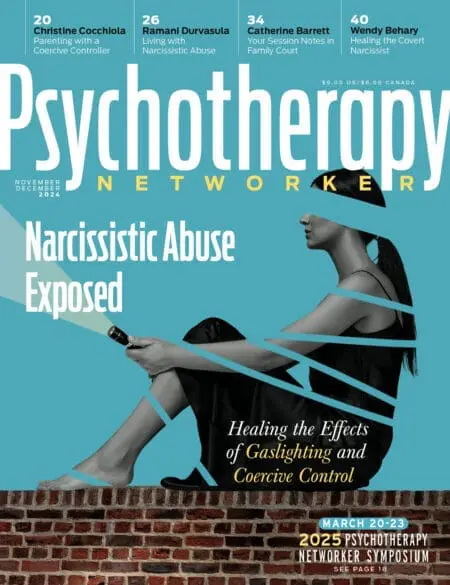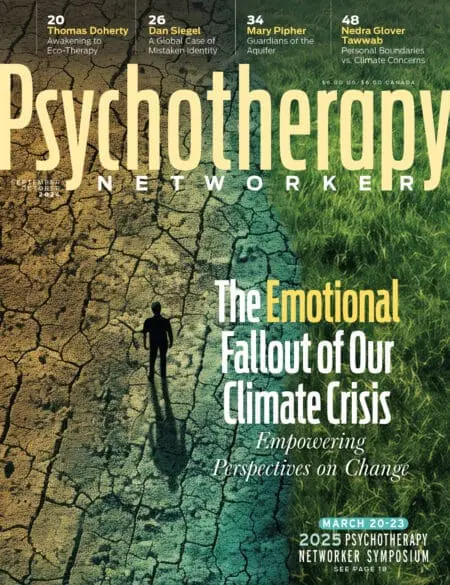We’ve heard of helicopter parenting, but helicopter professoring? According to some critics, an overly protective approach to presenting college course materials deemed too triggering—in books, lessons, and lectures—could soon be coming to a university near you.
A decade ago, a term like trigger warning would seldom have been uttered on college campuses. But in recent years, more and more American colleges and universities have faced demands that classroom material be prefaced with these warnings, which note that exposure to it could generate a high degree of distress. In 2014, students at Rutgers University demanded in The Daily Targum that The Great Gatsby include a trigger warning for scenes depicting “gory, abusive, and misogynistic violence.” And last May, several students writing in the Columbia Daily Spectator called for the removal of Ovid’s Metamorphoses from literature courses. They claimed stories such as the mythological rape of the goddess Persephone are “wrought with histories and narratives of exclusion and oppression” that “can be difficult to read and discuss as a survivor.”
While it’s only recently that this new way of guarding emotional wellbeing seems to have entered the American lexicon, the concept of a trigger—a sight, sound, or smell that conjures up an emotional reaction to a past traumatic event—is nothing new. But the concept of a trigger warning is a much newer phenomenon. By most accounts, the term began as late 1990s internet lingo, appearing as a courtesy on feminist online forums discussing sexual assault, before spreading to online blogs and message boards such as LiveJournal, Xanga, and Tumblr. Eventually the term went mainstream, cropping up on Facebook and Twitter newsfeeds to such an extent that between 2012 and 2016, the number of Google searches for “trigger warning” multiplied nearly tenfold.
Today, trigger warnings have expanded from chat rooms to classrooms, where it’s not uncommon for students to encounter potentially distressing material dealing with sex, race, and violence. Rather than becoming school policy, employing trigger warnings has so far been decided mostly by individual professors, with accommodations ranging from warning students about sensitive material ahead of lessons to giving them permission to excuse themselves from class temporarily. At schools like Dartmouth, Oberlin, and New York University, there have even been reported instances where students were allowed to opt out of watching films or reading novels and complete a different assignment instead. But despite their widespread use, there’s little consensus on what content is worthy of trigger warnings, or to whom they should apply.
In popular media, responses to trigger warnings have leaned toward the critical, often portraying them as an example of overzealous political correctness. In a June 2015 Vox story titled “I’m a Liberal Professor, and My Liberal Students Terrify Me,” one teacher lamented students’ newfound “ability to claim grievous harm in nearly any circumstance” and how professors’ “ability to respond to these claims is limited at best.” Last September, a widely read Atlantic cover story, “The Coddling of the American Mind,” proclaimed trigger warnings “disastrous for education and mental health.” Also in September, Psychology Today published “Microaggressions and Trigger Warnings,” in which Leon Pomeroy, a former psychology professor at George Mason University, blamed “a failure of education” for leaving schools “vulnerable to the bad and pathological thinking that gives us concepts like microaggression and trigger warnings as new manifestations of political correctness gone mad.”
Most colleges try to avoid taking an institutional stance in favor of trigger warnings. In August, University of Chicago Dean of Students John Ellison penned a welcome letter to the class of 2020 in which he specified that the university does “not support so-called ‘trigger warnings’” and would “not condone the creation of intellectual ‘safe spaces’ where individuals can retreat from ideas and perspectives at odds with their own.” And in August 2014, the American Association of University Professors published “On Trigger Warnings,” its own take on the phenomenon. “The presumption that students need to be protected rather than challenged in a classroom,” the statement read, “is at once infantilizing and anti-intellectual.”
Nevertheless, for all its critics, many professors are amenable—if not outright supportive—when it comes to trigger warnings. Last fall, an NPR study surveying 829 college faculty members found that about half of professors had issued a trigger warning at some point. Also last fall, the National Coalition Against Censorship surveyed 800 members of the Modern Language Association and the College Art Association, finding that more than half of respondents had at one point provided “warnings about course content.” Much of the support for trigger warnings appears to come from students, as when in March 2014, the student senate at UC Santa Barbara passed a resolution calling for mandatory trigger warnings to be added to course syllabi. The proposal, however, was ultimately shot down by faculty.
Are trigger warnings a boon to student mental health, or do they merely enable emotional fragility and promote a culture of avoidance? And is the extension of academic accommodations to those who haven’t directly experienced a traumatic event—but what critics say is nothing more than the trials of everyday college life—changing our definition of trauma and who it affects?
According to some therapists, like trauma specialist Janina Fisher, the rise of trigger warnings seems to indicate that sensitive issues are being studied and discussed more on today’s campuses than they were in the past. You don’t need to be directly traumatized, either, she says, to become triggered. A racial slur included in a textbook, she explains, can cause suffering even if it’s not directed at the person reading it. Likewise, Fisher says, you can still be affected by reading about rape, even if you’re not a direct victim of sexual violence. Suggesting otherwise, she argues, is an insular point of view. “This is like saying the world is an inherently racist, classist place,” she says. “As if there’s no reason that any part of your life should be protected.”
Rather than impede a student’s growth and education, Fisher contends that trigger warnings signal an evolution in how we think and speak, which colleges and universities need to promote. “It doesn’t seem to me that it’s inconsistent with free speech to say we have some standards about how free speech is used,” she says. “Universities are places of higher education. That doesn’t just mean book learning. It means social learning, cultural learning. It means thinking about how we can make people feel welcome.”
Fisher isn’t alone. “Trigger warnings aren’t about coddling students at all,” says trauma therapist Lisa Ferentz. “They’re about honoring the reality of students’ lives. It’s about being empathic and modeling kindness.” Living in a wired world, Ferentz explains, greatly accelerates the frequency at which young adults are “psychologically ambushed” by images of sex, violence, and racial tension. Like Fisher, Ferentz views trigger warnings as a part of the Millennial cultural climate, but says many young adults are still ashamed about their triggers. “The students I treat often say things like, ‘I should realize that these are just words and images; this is so dumb of me.’ But they’re gradually learning to say things like, ‘It makes me feel less crazy to know that triggering happens. It’s normal. I don’t have to be held hostage by it.’”
Ferentz is quick to note that trigger warnings don’t let students off the hook when it comes to fulfilling classroom obligations. Rather, she says, they give them time to prepare for triggers and utilize self-care techniques that they can practice on their own or with therapists. “In many ways, college students still have an adolescent brain,” Ferentz says. “It can’t process material that is highly violent or sexualized. And when we go into fight or flight, we’re no longer able to absorb what teachers are saying.”
However, some clinicians who also work as college professors are more reluctant to endorse trigger warnings. “The real issue with trigger warnings is that curriculums have to be changed to accommodate anyone who might be triggered,” says Richard McNally, a clinical psychologist and psychology professor at Harvard University. “Between World War II and the Holocaust alone, the whole 20th century is practically begging for a trigger warning,” he adds. “And if you’ve got 300 students, then you’d need ten or fifteen different curriculums. It’s an almost impossible task.”
While McNally admits there are new reasons for concern on college campuses—for instance, the alarming increase in sexual assault—he believes trigger warnings foster a culture of avoidance, in which potentially provocative discussions that aren’t inherently dangerous are kept at arm’s length, the anxiety never fully confronted. “People can build resilience by challenging and mastering difficult circumstances,” McNally says. “That’s exactly what happens in therapy, and it’s a tried-and-true strategy for dealing with anxiety. When you’re dealing with relatively minor reactions, avoidance really isn’t the best choice.”
The bottom line, McNally says, is that professors can’t be therapists to their students, as much as therapists don’t directly involve themselves in their clients’ academics. Ultimately, he says, while college faculty and staff can refer students to on-campus counselors or therapists, it’s the students’ responsibility to seek out mental health services when they need them. “It’s not the job of an English professor assigning a novel where violence or sexual assault occurs to be on alert,” he says. “They’re not in a position to do this. If a student is dealing with PTSD so severe that this triggers them, it’s a good indication the course isn’t right for them, or they need an intervention that’s a little more intensive. There’s no substitute for good therapy.”
Some professor-therapists believe teaching and providing therapeutic empathy should go hand in hand. Andrea Bonior, who’s worked as a psychologist and psychology professor at Georgetown for almost a decade, says that the number of students she’s encountered who are emotionally overwhelmed by college life has expanded significantly since she first began teaching. “The material we cover in my abnormal psychology class,” including material about eating disorders, sexual assault, and self-harm, “hits home for a lot of my students,” she says. Research confirms a steady increase in student anxiety. According to the American College Health Association’s spring 2016 National College Health Assessment, approximately 46 percent of male students and 64 percent of female students reported feelings of overwhelming anxiety over the past 12 months, compared to 38 percent of male students and 54 percent of female students surveyed in the spring 2011 assessment. “I think we can expect to see an uptick in people talking about facing difficult issues,” Bonior says. “Teachers and therapists need to be prepared for this.”
While Bonior notes that “if people put warnings on everything, they lose their meaning,” and that “we shouldn’t be encouraging the idea that discomfort is inherently bad,” she issues a verbal trigger warning for a video she regularly shows on suicide, telling students that if they have family or friends who’ve attempted suicide, the video might be particularly disturbing. The warning includes the option for students to sit this lesson out, or for them to come see her before or after class to talk about it. But even when students take her up on the offer, Bonior says she finds other ways to get the lesson’s message across with less visual media, like written assignments about suicide risk or warning signs. “What doesn’t make sense is using trigger warnings to take ourselves out of a conversation,” she says. “That’s why trigger warnings get a bad rap. But it is possible to create a safe space and still help students grow intellectually.”
Even if trigger warnings aren’t adopted on a larger scale, they indicate that the recognition of student mental health as an important issue has reached a level that faculty, students, and clinicians can no longer ignore. “College students are more emotionally fragile than they were 15 years ago,” says Alexandra Solomon, therapist and assistant psychology professor at Northwestern University. “I know that learning happens when you’re uncomfortable, but I’m not okay with student safety being jeopardized. This needs to be an ongoing conversation.”
Chris Lyford
Chris Lyford is the Senior Editor at Psychotherapy Networker. Previously, he was assistant director and editor of the The Atlantic Post, where he wrote and edited news pieces on the Middle East and Africa. He also formerly worked at The Washington Post, where he wrote local feature pieces for the Metro, Sports, and Style sections. Contact: clyford@psychnetworker.org.


